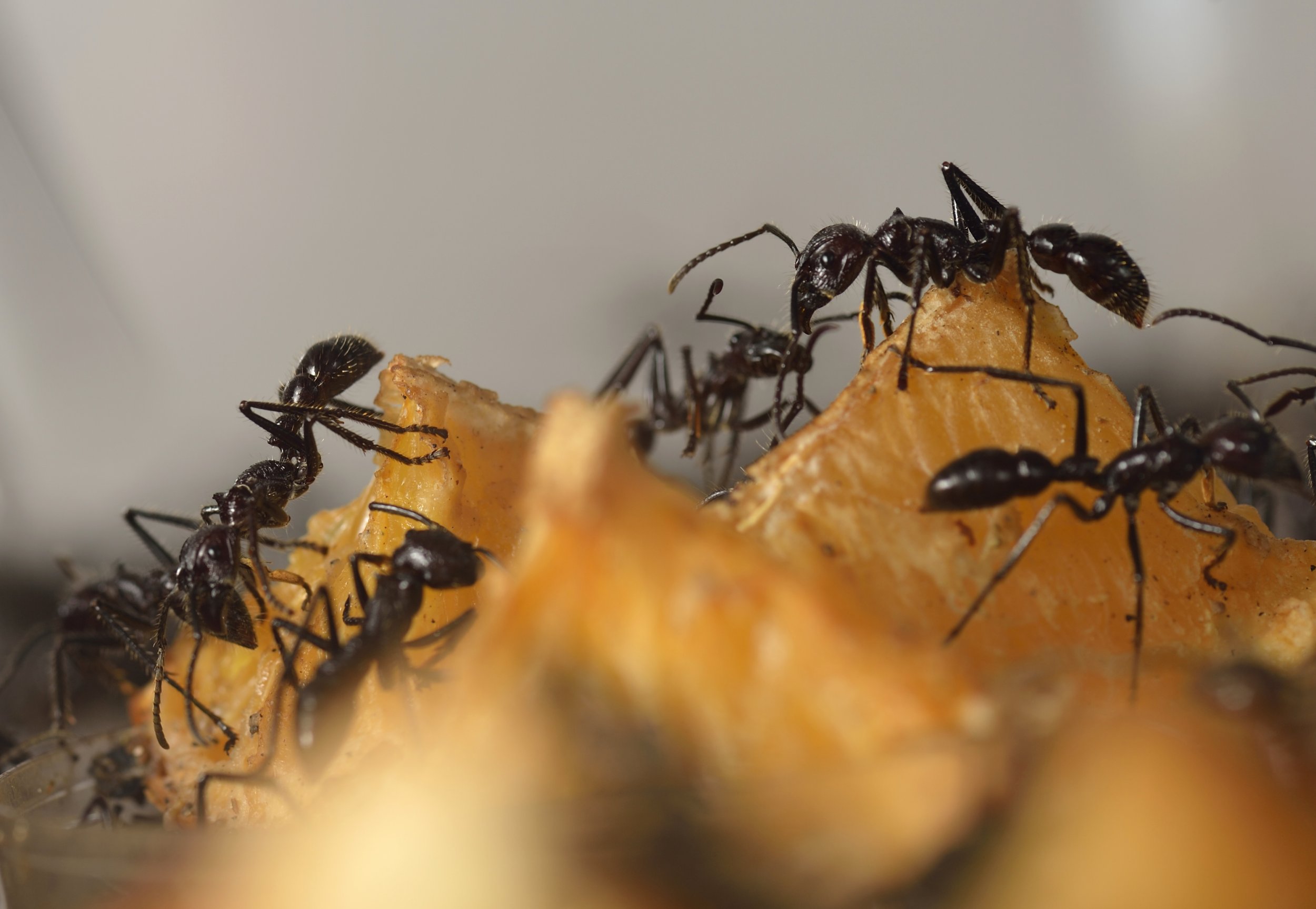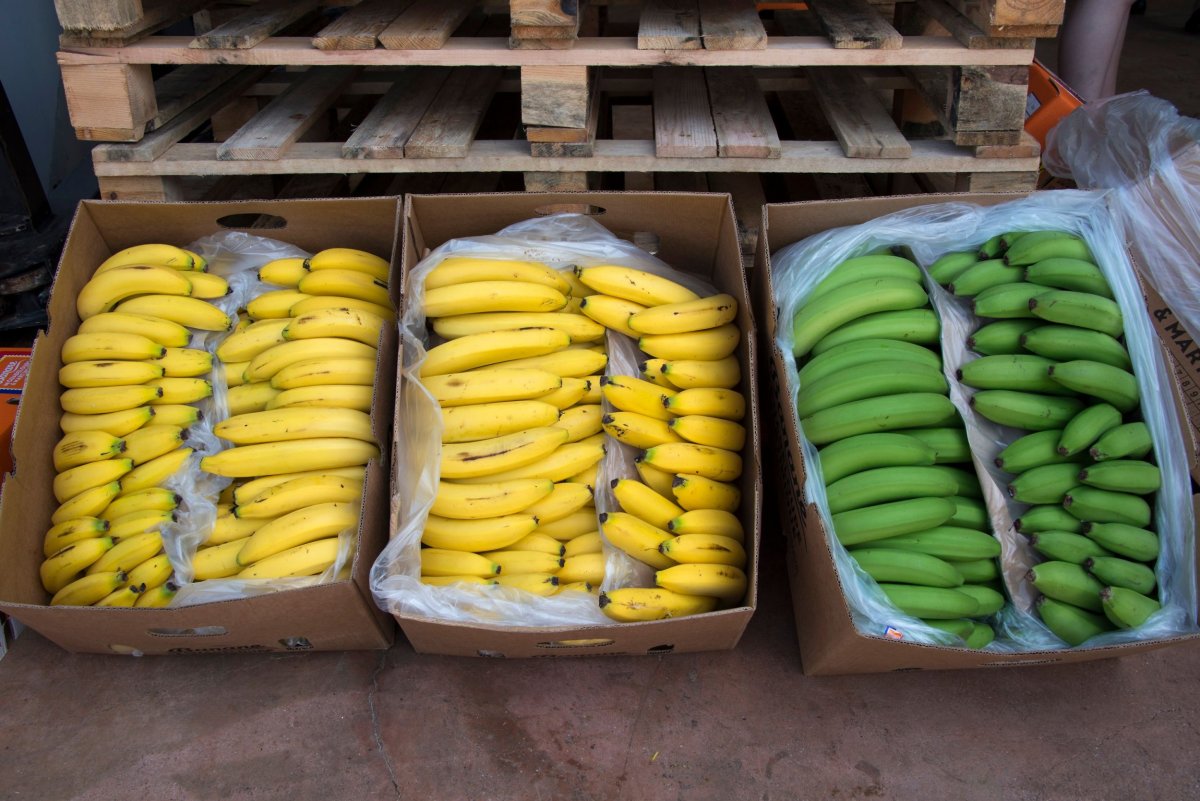
Ants are vital to ecosystems on every continent. In fact, they're known as "ecosystem engineers," building colonies that can stretch for miles. Grouping in huge populations that act like single organisms, the critters impact everything from the quality of soil to human health.
The invasion of "alien ants"—non-native species—is a massive concern for biologists. Ants can dominate native insects and even threaten human health. Following the trail of exported plants and fruit, invading ants hitch an intercontinental ride through human trade routes. With the rise of globalization comes the inevitable rise of the alien ant.
Cleo Bertelsmeier and colleagues have been tracing the journeys of thousands of ants around the world. Sifting through border control records stretching back 70 years, they've mapped the spread of U.S. and New Zealand-bound alien ant species in research published in Proceedings of the National Academy of Sciences. They discovered the vast majority of invading ants weren't even traveling from their native countries. This multisite pattern of invasion is accelerating the spread of alien ants around the globe.
Biosecurity agents intercepted more than 50 alien species at U.S. ports and more than 40 heading into New Zealand in more than 4,500 incidents. Almost 80 percent of the ants caught at the U.S. border were already invaders in the region they'd left. In New Zealand, this was more like 90 percent.
"More than 200 species have established populations outside of their native range," Bertelsmeier, who works at the University of Lausanne in Switzerland, told Newsweek. Their small size is key to their success; stealthy scouts hop on luggage and infiltrate food and plant exports. These accidental stowaways hitch a free ride on boats and planes, spread to new regions and set up colonies.
Scientists had long believed the main introductory pathway for alien species to new regions would be direct, Bertelsmeier explained. But these ants were taking layovers.
Related: India's Taj Mahal is changing color because of insect feces and pollution
Most invading ants demonstrated something called the "bridgehead effect." A relatively new concept in biology, researchers borrowed the term in 2010 from High Middle Ages military-speak. Human soldiers would congregate in strategically-important places—like the end of a bridge—while they prepared to invade nearby enemy territory. Ants that get shipped from their native region hole up in their new locale. They establish new colonies, which then end up sending out ant pioneers to new territories.
For ant species headed to the U.S., the main bridgehead was Latin America. Ant migrants foiled at the New Zealand border mostly came from Oceania. Their forefathers, however, often came from other continents—from Africa and Europe, for example.
Human trade routes, it seems, are taking ant species to far-off locations. Oceania provides a lot of fresh fruit and vegetables for New Zealand and Latin America for the U.S, Bertelsmeier explained. "It makes sense that these two regions act as a hub for other alien species that become introduced there," she said.
Following the scent of sugar, non-native ants get buried in piles and piles of fresh produce. Then, these species are re-exported to their new destination.

One of the worst-offending species was the African big-headed ant, which almost never traveled directly from Africa to the U.S. or New Zealand. "It's one of the top 100 worst invader species worldwide and it can have a huge impact on biodiversity," Bertelsmeier explained. "It can displace many other insects, and can even have impact on small mammals like small birds."
Getting caught up in human trade routes was speeding up the spread of invasive ant species around the globe. "There is a kind of self-accelerating loop so that the more a species gets introduced outside of its range, the higher the probability that it can establish somewhere else," Bertelsmeier said. "If you start having non-native populations elsewhere then these populations in turn can send out new colonizing populations, and these again get established."
Although ants are tiny, invading species can have an incredible impact on their new environments. Their incredible social skills are as important to their invasive success as their size. One of the most impressive examples is a supercolony of Argentine ants that stretches from Portugal to Italy. Thousands of nests across thousands of miles act like a single organism. Members from the furthest reaches of this bloc treat each other like comrades.
Related: Terrifying parasitic wasps knife their way out of bug corpses with spikes on their backs
In fact, scientists have even argued that a group of massive Argentine ant colonies like this actually form an intercontinental supercolony. Members from far-flung colonies in North America, Hawaii, Europe, New Zealand, Asia and Australia treat each other like they would members of their own local colonies.
These invasive species drive out populations of native ants. "They monopolize all of the food and this has huge consequences on a lot of other insects," Bertelsmeier explained. In some areas where you might once have found 15 native ant species, you'd be lucky to find one or two.
The impact of the great ant invasion isn't just limited to insects, as residents in the South are acutely aware. Millions of Americans are bitten every year by the red imported fire ant, which is estimated to cost the country billions of dollars in medical bills and damage every year.
As well as leaving a nasty bump, their venom can cause dizziness, chest pains and even death in those allergic to the critters. On top of all that, the ants damage structures like roads, as well as electrical equipment, agricultural machinery and crops.
Related: Ancient butterfly fossils reveal the insects evolved tongues 200 million years ago
Studying ants helps researchers to understand biological invasions more generally. "You can analyze the patterns in ants to understand something about invasions in general," Bertelsmeier added.
Ensuring countries have good biosecurity services, Bertelsmeier said, could help prevent the spread of other alien species. Once creatures like ants have spread to a new region, it can be almost impossible to truly eradicate them.
Keeping track of the tiny critters, she said, is crucial to protecting biodiversity worldwide.
Uncommon Knowledge
Newsweek is committed to challenging conventional wisdom and finding connections in the search for common ground.
Newsweek is committed to challenging conventional wisdom and finding connections in the search for common ground.
About the writer
Katherine Hignett is a reporter based in London. She currently covers current affairs, health and science. Prior to joining Newsweek ... Read more
To read how Newsweek uses AI as a newsroom tool, Click here.








